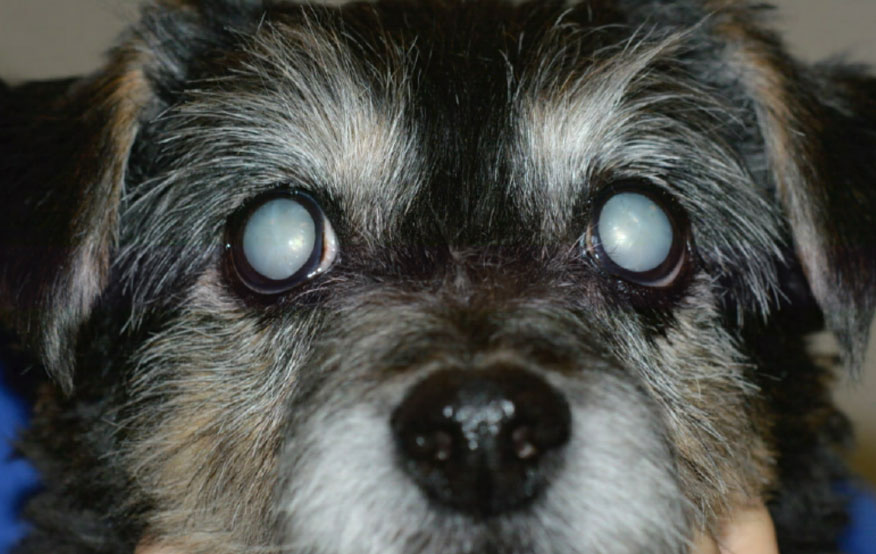Canine cataracts
Cataracts are one of the most common causes of vision loss in dogs and frequently lead to blindness.
In a healthy eye, light passes through the cornea (windscreen of the eye) and the lens to reach the back of the eye (retina). The lens is a transparent disc in normal conditions and is located behind the iris (coloured part of the eye). A healthy lens allows light to enter the eye and the lens focuses the light onto the retina producing a sharp image. A cataract is where the lens becomes opaque (cloudy), interfering with the passage of light. A cataract may be a small speck that hardly interferes with vision or much more severe, leading to vision loss.

What causes cataracts?
Most cataracts in dogs are the result of a genetic or hereditary defect. Many dog breeds are predisposed to hereditary cataracts, which may occur as early as at birth or develop later in young or middle-aged dogs. Dogs affected by hereditary cataracts should not be used for breeding. Other causes of cataracts are diabetes, advanced age, trauma or retinal disease. Depending on the cause, cataracts may or may not progress to total blindness. The degree of progression is often predictable and can be determined by means of a detailed examination by a specialist in veterinary ophthalmology.
How are cataracts treated?
The only effective vision-restoring treatment for cataracts is surgery, which is performed under general anaesthesia. Cataract surgery is usually performed with a technique called phacoemulsification. This technique uses special equipment to fragment and remove material inside the lens. The goal of the surgery is to remove the opacity and place an artificial intraocular lens (IOL) in the lens bag. The vast majority, though not all eyes, can have an IOL placed, which will help the eye to focus light on the retina. If no IOL can be placed, the animal will be far-sighted but able to see. To help the ocular health after surgery, all patients treated at the RVC are treated with eye drops daily for life. Surgery is recommended in both eyes at the same time (bilateral surgery) if both eyes have operable cataracts. The recommendation is based partly in the patient requiring only one anaesthesia and post-operative period.
